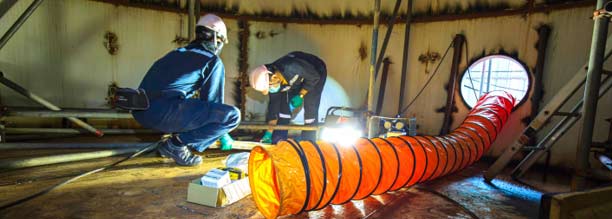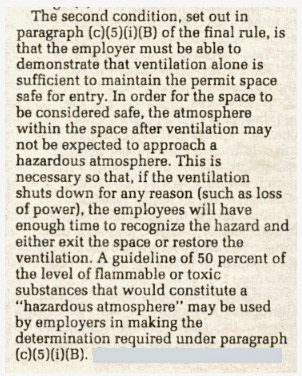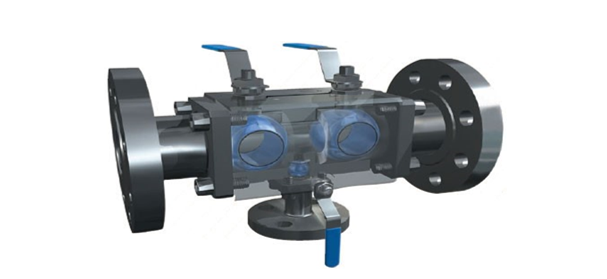
Blog Post #22 – Most employers are well aware that OSHA’s confined space standards for general industry and construction require extensive training for employees authorized to participate in permit-required confined space entry operations. We’ll explore that training in depth in future blog posts.
But what about workers at sites where confined spaces exist, yet some (or all) of employees are not assigned to work in those spaces? Is training for them mandatory?
What Do OSHA Standards Say About Training Unauthorized Workers on Confined Space Hazards?
Unauthorized entry into permit spaces—by employees or anyone else—cannot be tolerated. However, OSHA does not specifically state in the training section of their confined space standards that “all unauthorized workers must be trained to stay out of permit-required confined spaces.”
However, OSHA addresses this issue indirectly in other sections of its confined space standards, specifically in paragraph 1910.146(d)(1) of the general industry standards and paragraph 1926.1204(a) for construction. These sections clearly state that entry employers must implement measures to prevent unauthorized entry into any permit-required confined space.
Employers typically fulfill this requirement in several ways:
- Including a clear policy in their written confined space program that forbids unauthorized entry.
- Enforcing the policy through a disciplinary program.
- Covering this policy during training sessions for entry supervisors, entrants, and attendants.
However, it has been my experience that very few employers actually take time to address this topic with training for their non-authorized employees.
Additionally, OSHA standard 1926.21(b)(2) requires that all workers be trained to recognize and avoid unsafe conditions at construction sites. Since unauthorized entry into confined spaces presents significant hazards, training workers to stay out of them aligns with this requirement.
Why Training Unauthorized Workers About Confined Space Hazards Is Necessary
Even though OSHA confined space standards do not specifically require this training, prudent employers should take the time to educate all unauthorized workers about this topic, including:
- What permit-required confined spaces are.
- The hazards these spaces present.
- A list of actual or example permit spaces at their worksites.
- The fact that entry into any permit space is strictly prohibited for unauthorized workers.
Too often, many employers fail to provide this training, and tragedy occurs. Here are two real-world examples from cases I’ve worked on as an expert witness where training could have helped prevent the incident:
Case #1: The Fatal Auger Shroud Incident
A two-man repair crew from an industrial services company was sent to a cattle feedlot to replace a worn auger in an 18-inch diameter, 15-foot-long discharge auger shroud connected to a large grain bin. No entry into the bin or shroud was anticipated, and neither crew member was trained as an entrant or attendant, nor were they trained to stay out of confined spaces.
When grain from the bin began seeping into the shroud after the old auger was extracted, thereby blocking the new auger’s insertion, the foreman attempted to clear it manually with a scoop welded on the end of a long piece of rebar. When that failed to work, he made the fatal decision to slide headfirst into the shroud with a rope tied around his waist, instructing his helper to pull him out if needed.
Tragically, he became trapped. The helper could not pull his co-worker out by hand. So, in a panic, he tied the loose end of the rope to the hitch of their crew truck and attempted to pull him out. The effort resulted in horrific injuries suffered by the foreman, and he did not survive.
Case #2: The Manufacturing Plant Tragedy
At a large manufacturing plant, a maintenance tech was dispatched to repair a faulty drainage valve affixed to the exterior of a process tank. Company policy dictated that employees would not enter tanks; outside contractors were hired for such tasks.
When the tech failed to report back, a helper was sent to check on him. The helper eventually found the tech’s toolbox near a tank, with tools scattered around. Climbing onto the tank, the helper noticed a raised hatch cover and, upon looking inside, saw the maintenance tech lying motionless on the tank floor.
The helper radioed for assistance but then made the deadly decision to climb inside the tank to help his coworker. Both men ultimately perished due to oxygen deficiency caused by evaporated chemical vapors inside the tank displacing breathable air.
Further investigation revealed that while employees knew they were not allowed to work inside tanks, many did not perceive merely entering an empty tank as a serious risk. Some even admitted to having done so before, unaware of the life-threatening dangers.
The Takeaway: Train Your Unauthorized Workers About Confined Space Hazards, and Document It
In both of these cases, and many more like them, lives were lost because unauthorized workers did not understand that entering these spaces—even for seemingly minor reasons—could be deadly. Had their employers explicitly informed them that entry into such spaces was never permitted under any circumstances, these tragedies could have been prevented.
Employers, take the time to train your unauthorized workers about confined space hazards. And document that training so you have tangible proof during safety audits and regulatory inspections. If you need assistance, scroll down to see how we can help you implement effective training
IMPORTANT NOTICE:
Here is an easy and effective way to send the message to your un-authorized workers about the dangers of permit spaces, and why it is crucial that they never enter one for any reason. Register them for our online “Confined Space Awareness Training Course for Unauthorized Workers.”
The online course is short and sweet, to the point, and can help keep your workers safe and your business OSHA compliant.
Why Choose This Awareness Level Confined Space Training Course?
Flexible Learning: Employees can train at their own pace, logging in and out from any compatible device.
- Convenient Registration: Employees can sign up individually, or you can enroll your team through a free Learner Manager account, which also enables you to track progress and manage certifications.
- Proof of Compliance: Upon successful completion, employees receive a personalized training certificate, which serves as tangible proof of compliance during safety audits and regulatory inspections.
Click the button below be directed to our online confined space training page where you can read more and then sign up for this online Confined Space Hazard Awareness course. And while you are on our website, check out the comprehensive online courses we offer for entry supervisors, entrants, attendants, and the competent person.
Share Your Point of View About Confined Space Hazard Awareness Training
Does your company provide training to unauthorized workers on confined space hazards? If so, how is the message delivered, and how effective has it been? Or perhaps you have a story about an accident that occurred under similar circumstances?
Please share your thoughts in the comments section below. And if you find this information valuable, share this post with others who could benefit from it.




